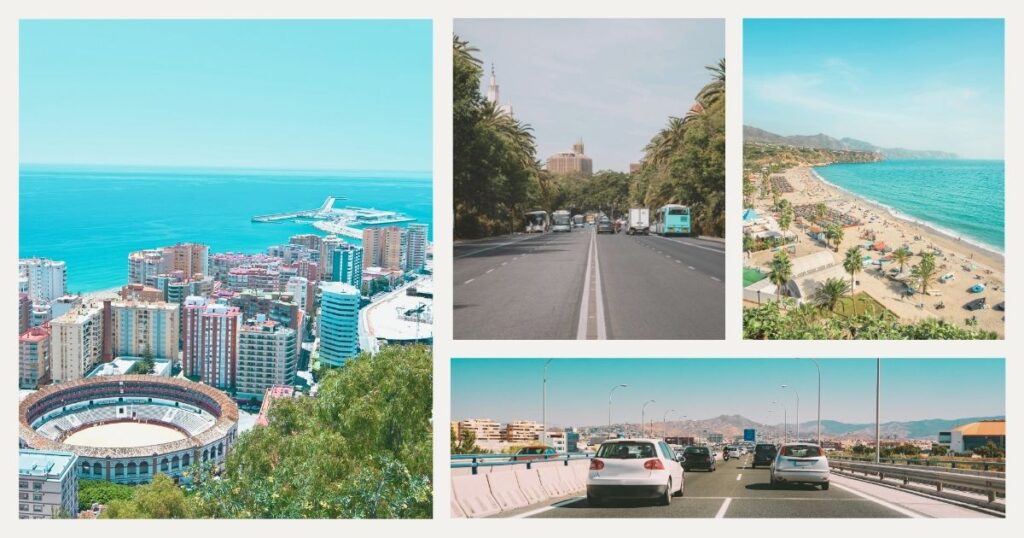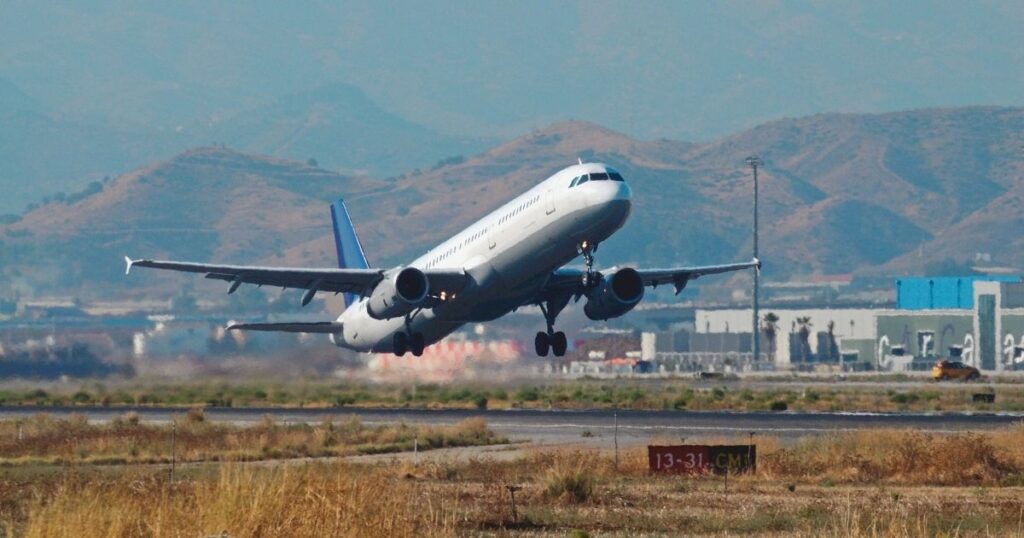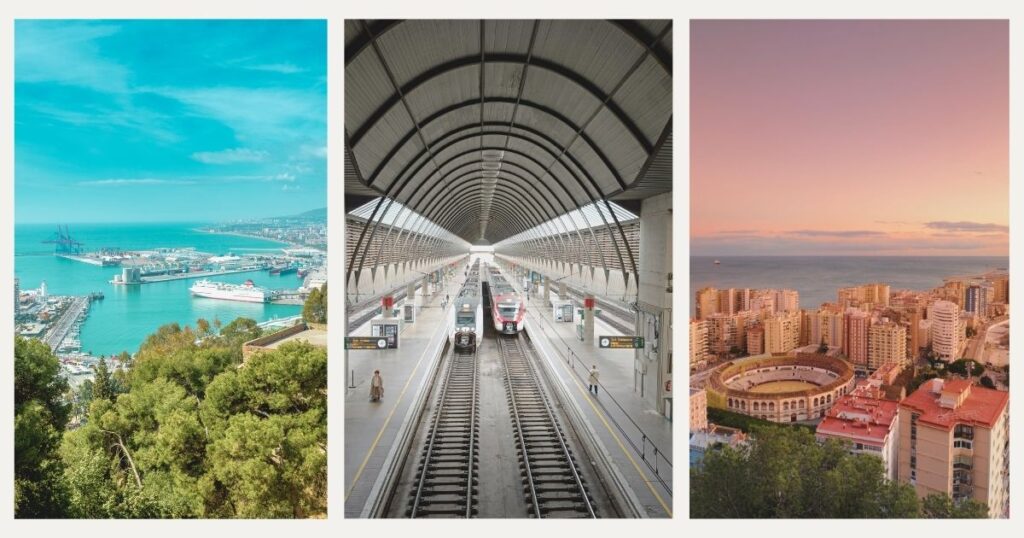Malaga’s Mediterranean climate, rich cultural heritage, and growing digital infrastructure have positioned this Andalusian gem as a premier destination for location-independent professionals. With its perfect blend of historical charm and modern amenities, it’s no wonder that digital nomads are increasingly drawn to this coastal Spanish city.
Planning your journey requires understanding the various transportation options, seasonal considerations, and logistical details that can significantly impact your arrival experience. Whether you’re relocating for a month or considering a longer stay, knowing how to get to Malaga, Spain, efficiently can set the tone for your entire digital nomad experience.
This guide examines the most practical routes to Malaga, insider tips for smooth travel, and essential information to ensure your journey is as productive and stress-free as possible.
Understanding your options for reaching Malaga

Before booking your travel, it’s important to understand the full spectrum of transportation options available for reaching this Mediterranean destination.
Flying to Malaga: the most direct option
For international digital nomads, flying is typically the most efficient method for how to get to Malaga, Spain. The city is served by Malaga-Costa del Sol Airport (AGP), the fourth busiest airport in Spain and a major gateway to Andalusia. This facility handles over 20 million passengers annually and maintains connections with more than 60 countries.
Direct flights to Malaga are available from major European hubs including London (2.5-3 hours), Paris (2.5 hours), Amsterdam (3 hours), and Berlin (3.5 hours). From North America, travelers typically connect through Madrid, Barcelona, or other European hubs, with total journey times ranging from 10-15 hours, depending on connections.
Nomada recommends booking flights 2-3 months in advance to secure optimal pricing, particularly during Malaga’s high season (June-September) when costs can increase by 30-50%.
🌟 Pro tip: when searching for flights to Malaga, consider nearby airports in Seville or Granada with connecting ground transportation. These alternative routes can sometimes offer significant savings while providing an opportunity to experience more of Andalusia.
Train travel to Malaga: the scenic route
For digital nomads already in Europe, train travel presents a comfortable option for getting to Malaga, Spain. The city’s María Zambrano station is well-connected to Spain’s high-speed rail network (AVE), making it accessible from major Spanish cities: Madrid to Malaga takes approximately 2.5 hours, while Barcelona to Malaga takes around 5.5-6 hours.
International train travelers can reach Malaga by connecting through Madrid or Barcelona. The journey from Paris requires approximately 12 hours with connections, while London travelers can combine the Eurostar to Paris with subsequent connections.
Train travel offers advantages for digital nomads, including:
- Productive working time with tables, power outlets, and often reliable WiFi
- Scenic routes through the Spanish countryside
- No airport security delays or baggage weight restrictions
- Arrival directly in the city center
💡 Did you know? Spain’s high-speed AVE trains maintain an impressive punctuality guarantee—if your train arrives more than 15 minutes late, you’re eligible for a partial refund.
Driving to Malaga: freedom and flexibility
For those already in Spain or neighboring European countries, driving offers flexibility when considering how to get to Malaga, Spain. The city is well-connected via excellent highway infrastructure, with the A-7 and AP-7 coastal motorways linking Malaga to other Mediterranean cities, while the A-45 provides direct access from central Spain.
Approximate driving times to Malaga from major Spanish cities include:
- Seville: 2.5 hours (200 km)
- Granada: 1.5 hours (125 km)
- Madrid: 5.5 hours (540 km)
- Barcelona: 9 hours (1,000 km)
Digital nomads driving from other European countries should plan for multi-day journeys with strategic overnight stops.
🌟 Pro tip: when driving to Malaga, avoid entering the city center with your vehicle if possible. Many central areas have restricted traffic zones (ZTL) with automatic camera systems that issue fines to unauthorized vehicles.
Seasonal considerations for traveling to Malaga

The timing of your journey significantly impacts both your travel experience and initial impressions of Malaga.
Optimal travel seasons for digital nomads
Understanding seasonal patterns is crucial when planning how to get to Malaga, Spain. While the city enjoys a favorable Mediterranean climate year-round, travel conditions and costs vary significantly across seasons.
Spring (April-June) and fall (September-October) represent ideal arrival periods for digital nomads, offering excellent travel conditions with moderate temperatures, reduced tourist crowds, and more favorable accommodation rates. These shoulder seasons also typically feature more available flight options and lower transportation costs.
Summer arrivals (July-August) face higher transportation costs across all methods for getting to get to Malaga, Spain, with airfares often increasing by 40-50%. Winter journeys (November-March) offer the most economical transportation options, with significant discounts on flights and accommodations.
Cultural events and travel timing
Malaga’s vibrant cultural calendar influences transportation availability and costs throughout the year. When researching how to get to Malaga, Spain, consider these significant events that impact travel conditions:
Semana Santa (Holy Week, March/April) transforms Malaga with processions and celebrations, creating extremely high demand for all transportation options. Book at least three months in advance if arriving during this period.
The August Feria (Malaga Fair) brings increased domestic tourism and reduced transportation availability, particularly affecting train reservations and regional flights from other Spanish cities.
Digital nomads planning extended stays should consider timing their arrival to avoid these peak periods, when transportation options become both more expensive and less available.
Practical navigation for arriving digital nomads

Once you’ve determined how to get to Malaga, Spain, understanding your options for the final leg of your journey is essential for a smooth arrival experience.
From Malaga airport to the city
Malaga-Costa del Sol Airport (AGP) is conveniently located just 8 km from the city center, offering several efficient transfer options:
- The Airport Train (Cercanías C1 line) provides the most cost-effective airport transfer at approximately €1.80 per journey. Trains depart every 20 minutes, connecting the airport to Malaga Centro station in about 12 minutes. This option is ideal for travelers with manageable luggage arriving during the train’s operating hours (6:30 AM to 11:30 PM).
- Airport Express Bus (Line A) operates every 30 minutes between the airport and Malaga’s city center, with a journey time of 15-25 minutes depending on traffic. Tickets cost approximately €3 and can be purchased from the driver.
- For digital nomads arriving with substantial equipment or outside public transportation hours, taxis provide convenient door-to-door service, with fixed rates from the airport to central Malaga ranging from €20-25.
🌟 Pro tip: when deciding how to get to Malaga, Spain, consider your arrival time carefully. If landing after 11:00 PM, public transportation options become limited. Pre-arranging transportation or budgeting for a taxi is advisable for late arrivals.
Staying connected during your journey
Maintaining connectivity during transit is a critical consideration for digital nomads. When planning how to get to Malaga, Spain, ensure your devices remain connected with these strategies:
Upon arrival, having immediate mobile data access is essential for navigating to your accommodation, contacting hosts, or making last-minute travel adjustments. A travel eSIM from Holafly provides seamless connectivity from the moment you land, eliminating the need to search for local SIM cards or rely on potentially unreliable airport WiFi. With data packages specifically designed for Spain, this solution ensures you’re operational immediately upon arrival.
For those traveling by train or car within Europe, consider these connectivity preparations:
- Download offline maps of Malaga before arrival
- Pre-arrange your first night’s accommodation with clear arrival instructions
- Save essential contact information and addresses in an offline format
Transportation logistics for equipment and gear
Digital nomads often travel with valuable equipment, creating additional considerations when determining how to get to Malaga, Spain. Each transportation method offers different advantages for managing professional gear:
Flying provides the quickest route but requires careful planning for equipment protection. Most airlines serving Malaga permit cabin baggage between 7-10kg, with many allowing an additional “personal item” such as a laptop bag. Consider these strategies for flying with professional equipment:
- Distribute weight between checked and carry-on baggage
- Never check essential work equipment like laptops and cameras
- Consider equipment insurance for high-value professional gear
Train travel allows more generous baggage allowances without weight restrictions, though space limitations still apply. The direct access to city centers eliminates additional transfers that pose a risk to equipment.
Driving offers maximum flexibility for equipment transport but requires secure overnight storage during multi-day journeys.
Final thoughts on traveling to Malaga
Understanding the various methods for how to get to Malaga, Spain, is essential for digital nomads planning their Spanish adventure. The city’s excellent connectivity through air, rail, and road networks makes it accessible from virtually anywhere in Europe and beyond, offering flexibility to match different preferences, budgets, and equipment needs.
What sets Malaga apart from other digital nomad destinations is its balanced transportation infrastructure. Unlike some remote work havens that require complicated multi-step journeys, Malaga offers direct accessibility without sacrificing the Mediterranean lifestyle and cultural richness that makes it so appealing to location-independent professionals.
As you finalize your travel plans, remember that your method of arrival can significantly impact your initial experience and productivity. Selecting the right balance of convenience, cost, and comfort ensures you begin your Malaga digital nomad experience on the right foot.
Looking for comprehensive support throughout your digital nomad journey in Spain? Explore our complete guide to establishing yourself in Andalusia, covering everything from regional work visas to the best neighborhoods for remote professionals.
With multiple transportation options and year-round accessibility, your journey to Malaga is just the beginning of your Spanish digital nomad adventure. Let Nomada help you transform travel logistics into the first step of your Mediterranean success story 👉
Frequently asked questions about getting to Malaga
Budget airlines like Ryanair, EasyJet, and Vueling typically offer the most economical options from major European cities. Book 2-3 months in advance and consider flexible travel dates to secure the best fares. Alternatively, bus services like FlixBus provide budget-friendly routes from nearby Spanish cities.
The train and bus connections from Malaga Airport are highly reliable, with frequent service throughout the day. The C1 train line is particularly efficient, rarely experiencing significant delays. However, services reduce significantly after 10:00 PM and stop completely between midnight and 6:00 AM.
For digital nomads staying primarily in Malaga city, a car is unnecessary due to limited parking and restricted traffic zones. The city’s excellent public transportation system and walkable center make urban navigation simple. However, if you plan to explore the surrounding regions extensively, a car provides valuable flexibility.
High-speed AVE trains offer the optimal balance of comfort, convenience, and travel time from Madrid (2.5 hours) or Barcelona (5.5-6 hours). These trains feature workspace-friendly amenities like tables and power outlets, making productive use of travel time possible.
For flights during high season (June-September), book 3-4 months in advance to secure reasonable fares. Shoulder season travel (April-May, October-November) typically requires 2-3 months advance booking, while winter travel (except Christmas/New Year) often offers good deals even 3-4 weeks before departure.



